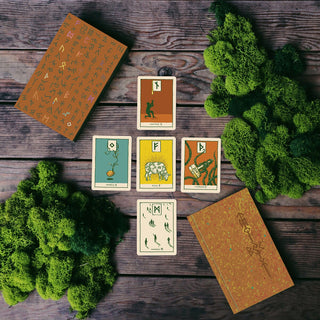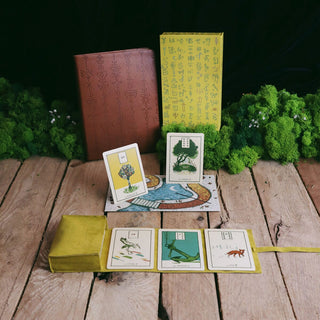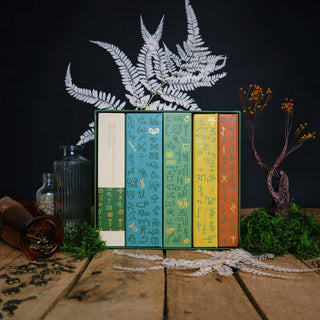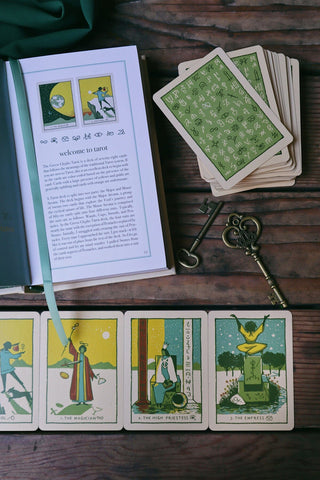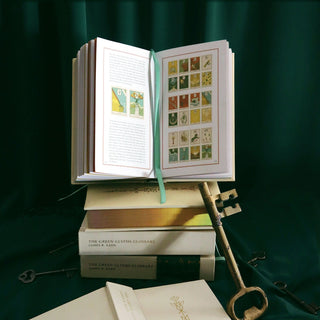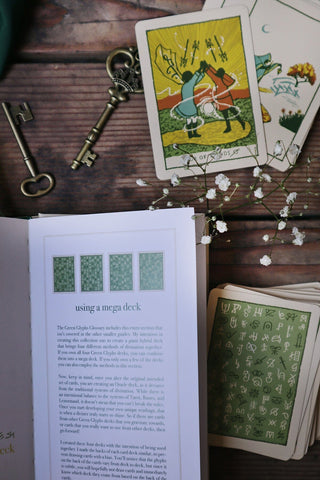GUIDE TO Runes
INTRO TO RUNES

GREEN GLYPHS RUNES
Green Glyphs includes both Elder Futhark and Anglo-Saxon Runes, systems of divination that have been around for many centuries. Typically, Runes are found in the form of stones, dice, talismans, or other objects with carvings.
Each card in Green Glyphs has the runic symbol, the traditional name, and an image that encompasses the meaning of the symbol. Each Rune conveys a concept or feeling that was prevalent thousands of years ago and still remains relevant today. The Elder Futhark Runes is a set of twenty-four runes split into three families or “Aetts”. The Anglo-Saxon runes include 9 extra runes in the deck.

A COMPLEX AND DEEP HISTORY
Runes were once an ancient alphabet, dating back thousands of years and used by the Anglo-Saxons, Goths and Norsemen. The word “rune” translates to “mystery” or “secret”. The runic alphabet was in use for a few hundred years, in what is now Northern Europe, before Christianity replaced the usage of these symbols as a primary language with our current alphabet. Runes have been found scrawled on artifacts like spears, shields, bones, and tombstones. It is likely that the sharp angular shapes of the Runes are because they were mostly carved into hard surfaces like bone, metal, and wood, where carving rounded shapes would have been more difficult. It was thought that Runes were used in magical ceremonies even before the development of the alphabet. We are able to trace the magical usage of Runes back to at least the first century, but much has been lost to time. To pinpoint the exact origin of Runes would be difficult, as they are thousands of years old and exist in many different forms.
The pagan Norse gods are intricately woven into several Runes.

It is said that Odin, the Norse god of war, god of poetry, and “The Inspired One” journeyed through the nine worlds to the World Tree until he arrived at the roots of the tree above the Well of Wyrd. It was there that he hung himself from the tree for nine days and nine nights until the Runes appeared before him. Odin then sacrificed his eye for the Runes and reached into the Well of Wyrd to bring the Runes into existence.
The runic system that we are using in this deck likely began to form around the first century BC, yet similar symbols that are found in this system can also be traced back over 12,000 years to images scrawled on cave walls in Europe. There are three main runic systems still in use today: The Elder Futhark Runes, The Younger Futhark Runes, (which took some inspiration from the Elder Futhark but also omits several runes), and the Anglo-Saxon Futhorc.
The Elder Futhark Runes are the oldest runic alphabet and one of the most widely used today and will be what we are using here to begin. The Elder Futhark Runes were adapted from an alphabet, so the first 6 runes in the sys.tem spell out the letters F-U-TH-A-R-K. F is represented by Fehu, U by Uruz, TH by Thurisaz, A by Ansuz, R by Raidho, and K by Kenaz.
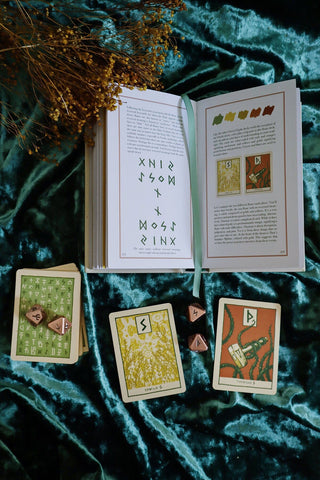
THE IMPORTANCE OF SYMBOLS
You’ll note that many of the Runes are based off of simple concepts-- cattle, harvest, hail, dawn, water, etc. But each of these runes also has a much deeper meaning. Much like Tarot and other systems of divination, we use these base meanings to extrapolate deeper into our own subconscious. Water is often attributed to the mind and the ebb and flow of intuition, and this is true with Runes as well. This system of symbols is comprised of some of the most important aspects of Nordic life thousands of years ago. So something like ice, which to us is generally just a small inconvenience, could be the matter of life and death back then.
You’ll also note some differences with the Rune system in comparison to other forms of divination. For example, there is no true presence of darkness, night, or the moon. Yet we have three runes that speak toward light: the sun, dawn, and flame. If we make the distinction that darkness is not only darkness, but rather a lack of light, then it begins to make a bit more sense.

As with many forms of divination, the art of reading Runes was lost and regained over time. Some meanings were never truly uncovered, but by linking this system of Runes to other systems, scholars have been able to extrapolate meanings. Each book on Runes may vary slightly based on the authors’ interpretations and their own research. As always, it’s best to consult many guides when learning a new craft. In the back of this guide you’ll find a bibliography with some of the sources I used to learn about Runes.
As Christianity swept across Northern Europe, Runes (and other forms of divination) fell back into the shadows. The Elder Futhark Runes then gained wider interest outside of Northern Europe in the nineteenth century, with heightened interest in forms of divination like Tarot and Lenormand. Unfortunately, in the twentieth century, Nazis appropriated several symbols from the Elder Futhark Runes and interpolated them into Nazi propaganda.
As always, it is important to note the context of usage when these symbols appear elsewhere outside of the runic system.
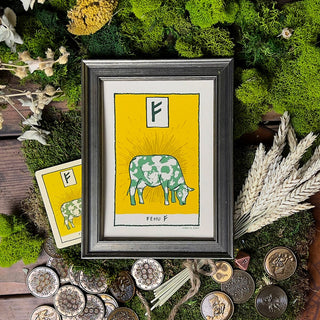
Runes have existed for thousands of years, and there is a deep magic that should be honored.
There have always been negative connotations for Tarot decks, associating them with satanic worship, and they are still looked at skeptically by many who are not familiar with the true magic. Tarot is such a unique tool for creating a sense of peace in your life that can often be missed by many. Runes are no different. As modern magicians, it is our duty to uphold the integrity and beauty that comes with these systems and not turn a blind eye to their misuse.
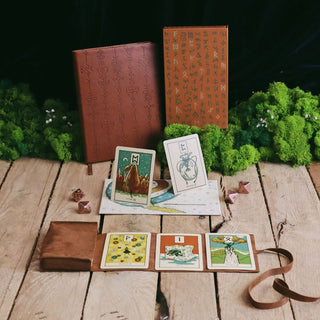
A RUNES REVIVAL
Recently, in the 1980s, there was a large Rune revival sparked by a newfound fascination with the occult and spiritual. Since then, Runes have once again started to make their way back into the lives of people across the globe.
Runes are so well-balanced, and it speaks volumes about the space in between things unsaid. Reading Runes is like studying negative space. So much can be learned from the space in between things.



